“Aye, aye! and I’ll chase him round Good Hope, and round the Horn, and round the Norway Maelstrom, and round perdition’s flames before I give him up. And this is what ye have shipped for, men! to chase that white whale on both sides of land, and over all sides of earth, till he spouts black blood and rolls fin out.”
– Captain Ahab, Moby Dick
Editor’s note: This story, originally written for a feature-writing class in the WKU School of Media & Communication, contains personal observations and experiences of the reporter.
Story and photos by Cameron Shaw
Wind shoves the car into the right lane. Traffic is low, leaving Graham Martin a clear lane to push the limits of his CRV’s four-cylinder engine. The speedometer rises to 90 miles per hour. Rain drops start to bounce off the windshield. The constant hum of the blow threatens effective communication. In the passenger seat, Brett Garlitz fixes his eyes on the darkening sky. “I won’t jinx us,” he promised.
The car speeds over the wet pavement, spraying out a cloud of mist on all sides. Vehicles in the right lane fall out of view as Martin searches for an exit. The storm stampedes toward us; we need to get underneath it. Grayden Miller, behind the driver’s seat, opens his GPS. Nothing for miles. There isn’t time. Martin looks out the window. This might be our only chance. He looks in his rearview mirrors, scanning for police. A short middle passage between the overgrown median strip offers a chance for a U-turn. He hits the brakes and warns us to hold on.
***
I’m running late. The train’s horns scream, and the crossing gates come down.
No not now!
The pedestrian crossing signs on Adams Street block my path. After a minute of waiting, I text Martin:
“Bro, there’s a train”
“Bro”
I spot a break in traffic and dash across the road. With a backpack, camera gear, and an umbrella in tow, I veer through campus. As I pass Grise Hall, Martin calls me, and I answer immediately. “I’m almost there.”
Martin texted us all that morning with instructions.
“Don’t be late,” he said.
I’m exactly one minute behind schedule. The plan for April 2 was to depart the Baptist Campus Ministry at 9:30 a.m. Martin wanted us to pray together and check gear before we saddled up.
I came around the side of Munday Hall, passing garbage bins. The warm air mingled with the aging stench of college students’ trash. As soon as I emerged from the side alley, I saw Martin pacing outside the Baptist Campus Ministry.
Grayden Miller, a thrill-seeking freshman construction management major, stands beside Martin. Earlier this year, Miller joined Martin in a caving expedition where a rag-tag group of amateur explorers slipped and slid through dark crevices and streams beneath Bowling Green, Kentucky.
I unloaded my equipment into Martin’s car: a camera bag holding a Fuji Film XT-20 camera paired with an 18–135-millimeter lens and a Yashica 35-millimeter film camera with a 50-millimeter lens attached. In my second bag, I carry my laptop, notebook, and Bible.
After shutting the hatch, a young man sporting a pair of tennis shoes and a raincoat approaches Martin with a widening grin. Martin introduced him to us as Brett Garlitz, a WKU student and storm chasing ally.
Martin finished loading up his 2011 Honda CRV, and the rest of us got in. The weathered vehicle sported a front cattle rack, attached specifically for the use of storm chasing. Below was a black and red WKU plate, splattered with bug carcasses. On the top was a metal cage, intended to serve as a rocket launchpad for storm research. A WKU sticker paired with a White Squirrel Weather sticker decorated the hatch.
With Martin at the wheel, Garlitz took the passenger seat, so positioned for his experience reading radar. Miller sat behind Martin, and I behind Garlitz. We were off. The plan was to head to southern Ohio because storm predictions had shifted from central Kentucky to northern Kentucky in the days before, so Martin was looking to set up shop just northeast of Cincinnati.
Martin turned off onto I-65 North toward Louisville. “There’s no turning back now,” he said.
After hearing these words, anxiety crept up inside me. I know all too well the devastation that severe storms can cause.
On December 10, 2021, tornadoes spread across the Midwest. An EF-4 tornado formed in far northwest Tennessee and moved across western Kentucky, traveling 165 miles across approximately 12 counties. The tornado killed 57 people and injured more than 500. It was the deadliest recorded tornado in the U.S. in the month of December.
My uncle, Jamie Ball, could have lost his life that night. My uncle successfully chose to flee, but I, sitting in the back of a 10 year old car, decided to join in a hunt.
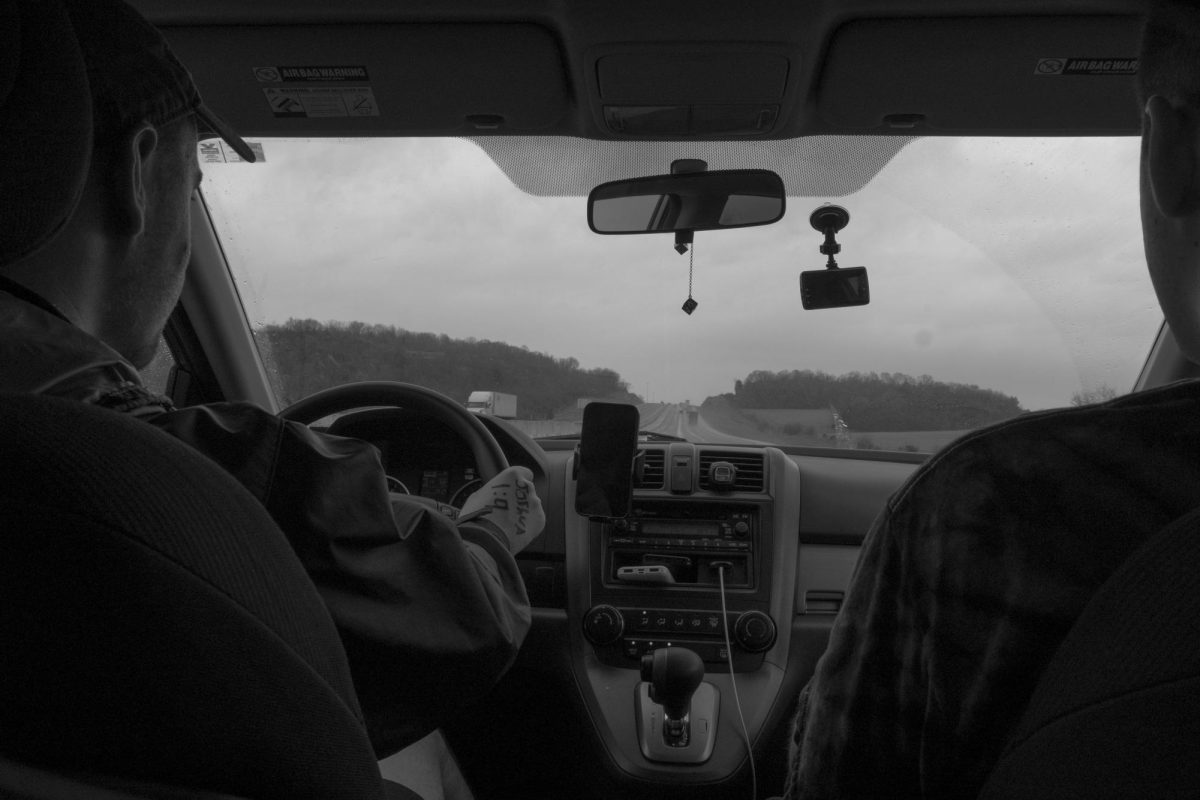
A captain’s wish
A foggy haze obscured the sky. Traffic was light, and the cruise control was set at 80. Inside the car, Martin had all the necessary tools an amateur storm chaser might carry: two large portable chargers, an electrical outlet strip, a cell phone displaying multiple radars mounted to the air vent, and a King James Version Study Bible still in the box.
The ride for the first hour and a half was calm. The crew shared stories about past “adventures” and current classes. Miller told us that his younger brother was jealous that he was storm chasing. The boy dreams of becoming a meteorologist. Passions for meteorology, Martin told me once, never leave. Some people seem predestined to love the intricate unpredictability of weather, while the rest of us would prefer to stand on the edge of the porch, admiring the looming darkness from a safe distance.
Martin was checking his radar and asking Garlitz and Miller to read off any updates from the Storm Prediction Center, an organization that works with the National Weather Service. Every so often, Martin asked me to relay information for him in various GroupMe’s. I wrote:
A message from Graham: just because the sun is out doesn’t mean the chance for storms is over. Threats are still there… This has been an alert by Graham Martin.
Since he was a boy, Martin knew this was what he wanted to pursue. “I’ve wanted to be a meteorologist my whole life,” he said.
As a child, he loved watching thunderstorms roll in with his dad at night on their porch. When he was in first grade, a teacher showed him a book about tornadoes, and from there, his curiosity took flight. From special Blue’s Clues weather episodes to maturing into Storm Chasers, he surrounded himself with weather wherever he went.
He was in fourth grade on March 2, 2012, when he turned on the news and saw multiple tornadoes in Kentucky and Indiana heading toward Ohio. “I just remember I was cleaning out our shoe closet in the basement, putting like a picnic blanket in there in case we had to take cover,” he said.
“That day spooked me, but then I kind of just grew out of the fear,” he said. Over time, he found ways to cope with the fear.
Martin tapped on the steering wheel to the rhythm of rain drops. On his right hand, he had written in black marker, “Joshua 1:9.” “Have not I commanded thee? Be strong and of a good courage; be not afraid, neither be thou dismayed: for the Lord thy God is with thee whithersoever thou goest.”
As we entered the St. Matthews area of Louisville, the flat blue of the sky deepened into a shadowy gray. A wall of rain ahead marked for us a new checkpoint. “We’re about to hit our first storm,” Martin said. He reached for the radar with one hand, but the power of the wind forced him to concentrate on the wheel. Another car crept to our side, and Martin swerved to avoid a potential collision. A short gasp leaked from Garlitz, who instinctively grabbed the overhead handlebars.
“I don’t see there being anything today,” Garlitz said. Martin glanced over at him. His fingers gripped the steering wheel. Garlitz continued to check radars and X. The outlook doesn’t seem fruitful, he said. Garlitz has storm chased with Martin on four other occasions from Arkansas to Indiana. They’ve never caught a single tornado together.
Entering La Grange, Kentucky, a screeching siren sounds from a small, handheld radio. When all else fails, Martin said, this is what’s used to warn about impending storms. The robotic voice on the other end alerted us that a severe thunderstorm warning was issued for the area. Martin’s face remained neutral.
Martin reached toward the dash and started scrolling through his phone. He found an unnamed contact in his recent calls and clicked on it. With an AirPod in one ear, he listened quietly. The rest of us waited.
Martin ended the call.
We’re going to Elizabethtown, he announced and turned the car around.
“I guarantee there’s going to be a big tornado today,” he continued, contradicting Garlitz’s pessimism.
As we took I-71 back toward Louisville, Martin bounced in his seat. Skyline Chili. Only the founders themselves could love Skyline Chili more than Graham Martin. All he would say is that it’s “a Cincinnati thing.” Skyline, he said, would be the place where we would ultimately decide to commit our efforts to either Kentucky or Ohio. Although he had reset our course, he wasn’t confident in Elizabethtown’s ability to provide a worthy enough storm. I was more worried about trying fast food chili.
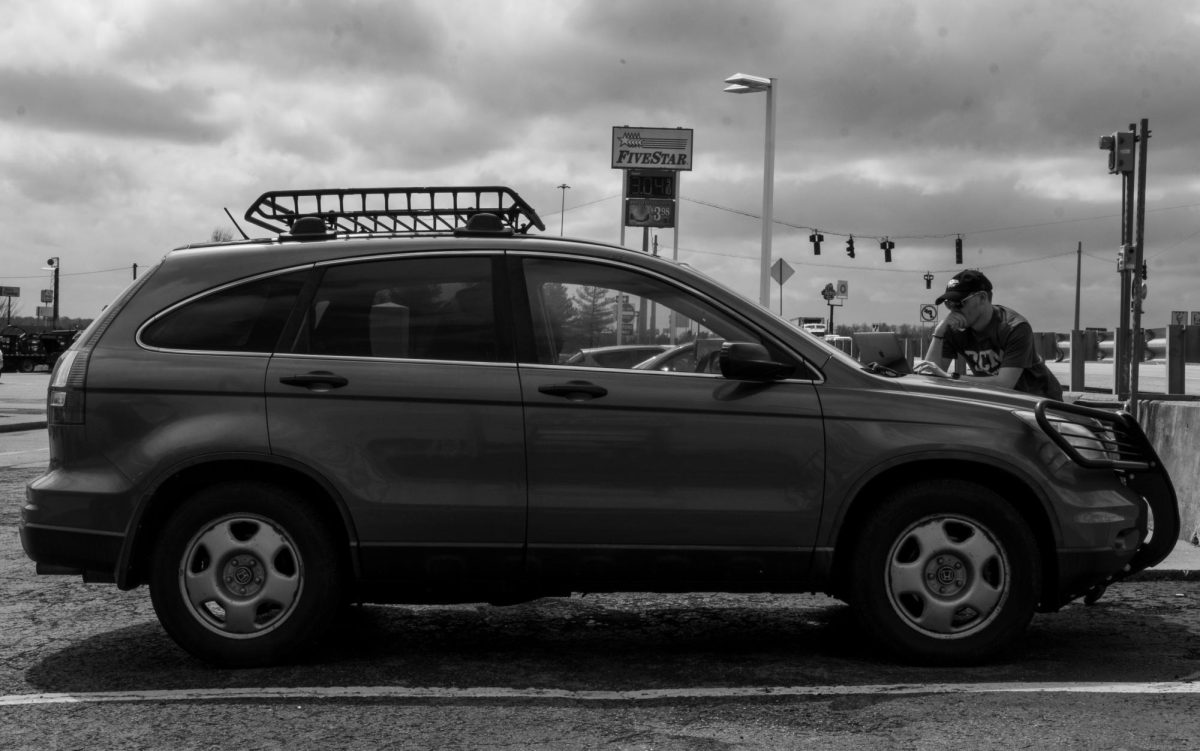
Waiting on nature
As we waited for our meal, Martin pulled out his laptop. He opened multiple radars and studied the array of greens and reds, cycling through different settings to account for wind speed, rotation and hail. This was one of the hardest days to forecast, he said, everything keeps changing.
There are a few ingredients for severe weather, Dr. Greg Goodrich, WKU professor and meteorology program coordinator, said. The first of which is moisture. “There has to be a lot of humidity in the air,” he said.
Next, there must be some source of lift that forces the air to rise. Lift can come from sun-generated heat or an incoming cold front, or, ideally, both. When the moist air rises, it eventually cools, forming clouds. “If the atmosphere is able to continue to rise, that can create really tall clouds that become the cumulonimbus clouds, which we call thunderstorm clouds.”
For a tornado to form, the circumstances must escalate.
“Tornadoes are not very common,” Goodrich said. “Some of the other ingredients you’re looking for is some kind of change in the wind direction with height. We call that ‘shear.’”
Shear causes the air to rotate. However, even with all these ingredients placed together, “they don’t always come together in the perfect way to make a tornado,” Goodrich said. There has to be some sort of x factor.
Once we finished our meal, Martin closed his laptop and confirmed that Elizabethtown was our next destination. We set out for Hardin County around noon.
The drive on I-65 was quiet for a time. The sun tried to peek through the clouds but was defended. I wondered if the storms had dissipated.
We entered Elizabethtown a quarter after 1 p.m., and we stopped at a Shell on N. Mulberry Street, located just between the exit for Bluegrass Parkway and I-65. As we opened the doors, 30 mile per hour wind lifted hats from heads and formed tears in our eyes. Martin opened the hatch and put on a black Pop-Tarts baseball cap and a pair of gold-rimmed aviators. He looked up. The sun shone through a thin layer of clouds.
Martin set his laptop on the hood of his Honda CRV and began studying forecasts once more. While flipping through radars, he sent messages out to friends, updating them on the potential risks in their areas.
I sat on the curb. To my right was an eroding street. Behind the rusting guardrail, an empty bottle of Fireball had apparently served its purpose.
Cars continued to pass by as Martin closed his laptop and led Garlitz into the station for snacks. Miller and I waited in the car until Martin returned with a bag of chewy Spree. Garlitz got in the car, but Martin stayed outside with his phone to his ear. After a few minutes, he settled back into the driver’s seat.
“The chase begins,” he said.
Where to, we collectively asked.
Leitchfield.
Leitchfield. Only 30 minutes from home.
On the evening of December 10, 2021, I returned home for winter break. I watched forecast updates online, and I saw that the storm was heading straight towards Dawson Springs and Madisonville. My uncle, Jamie, lived outside Dawson Springs in a small log cabin all to himself.
While I was staring at the computer screen, listening to Ryan Hall, a YouTube meteorologist, reveal the situation, my mother received a call from Jamie. Her eyes softened and she looked at me.
In just a matter of seconds, my uncle lost almost everything he owned. His cabin was moved from its foundation, his Jeep was flipped and thrown almost 20 feet from the driveway, family photos were shredded or lost, and his pet cat was nowhere to be seen. If not for a powerful gut feeling, we would still be mourning him.
With my mind beginning to feel uneasy, Martin put the car into drive, and he sailed us away from the Shell and toward Western Kentucky parkway.
***
Studying tornadoes is challenging. “So there’s two different ways that researchers approach this,” Goodrich said. One branch of research investigates why some thunderstorms produce tornadoes and others don’t, and the other branch looks at emergency management.
Tornadoes are rare, and when they do form, they don’t live for long, which makes them hard to measure, he said. A researcher can’t physically stand in the center of a funnel and measure what’s going on, and if a storm gets too close to a weather station, then the station is no more.
Storm chasing, too, is vital for alerting the public about storms, Dr. Reed Timmer, professional meteorologist, and star on the intense show Storm Chasers, said in an interview for AccuWeather in 2018. “With so many storm chasers out there, it’s very difficult for a tornado to go unreported, which is very important for warning people in the path of those storms and providing potentially life-saving information.”
But storm-chasing is as much thrill-seeking as it is research. “My mother, who’s also an educator, taught me that if I followed my dreams, I’d never work a day in my life,” Timmer said on his website. “She may have regretted those words once she saw that my passion was getting up close and personal with the most powerful forces on the planet.”
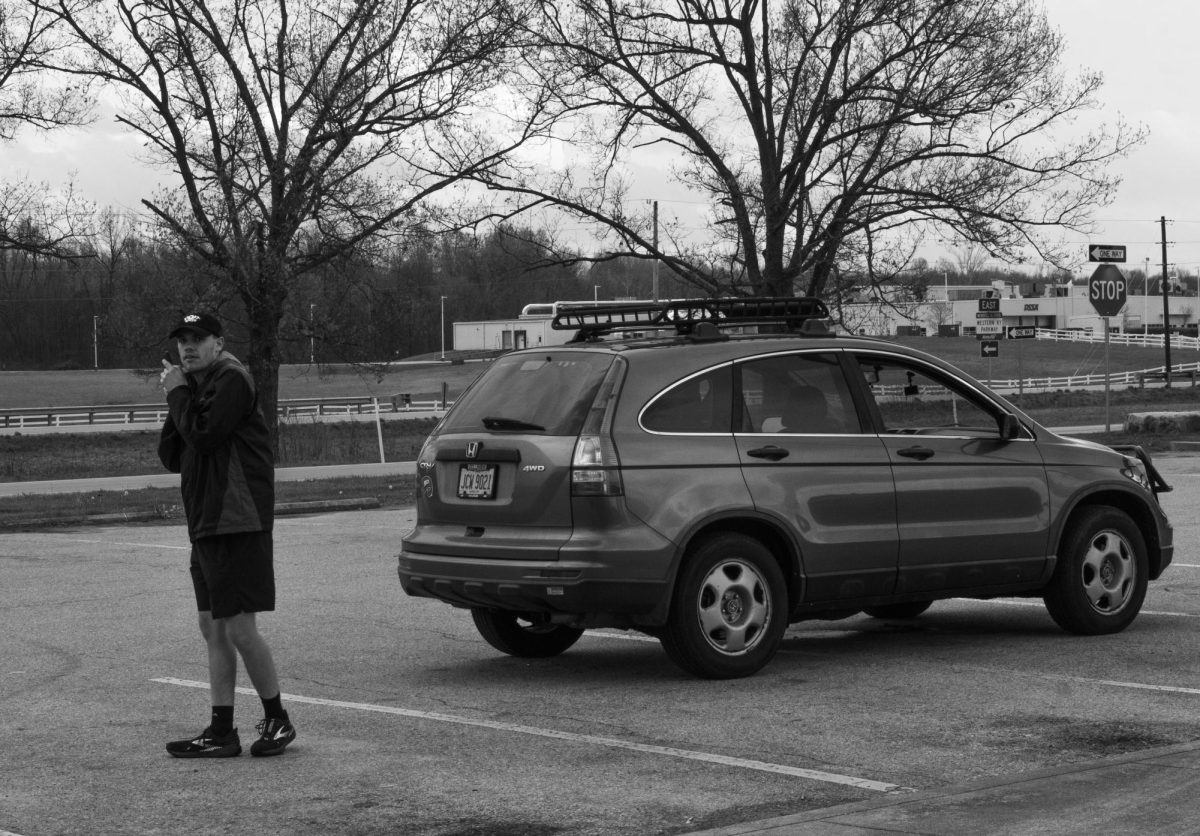
Weighing the costs
We arrived in Leitchfield at 3:24 p.m. Again, Martin parked at a gas station and, again, he checked the radar. The wind pounded the edges of the car, the constant drum of wind rumbled the windows. Martin looked up and put the car back into gear.
What’s the plan now? Garlitz asked.
We’re going further west to Beaver Dam, Martin said.
Garlitz, impatient, accepted the command, opened his GPS and rerouted us.
This is getting repetitive.
As we strained on, the wind roared, shoving the car. Martin struggled to keep control.
“As we ramp up into severe weather season, I offer the upfront reminder that chasing storms in this part of the country is a pretty ignorant and dangerous thing to do, with added dummy points for doing it at night,” Dr. Joshua Durkee, university meteorologist and professor, said in an email to all meteorology students on February 28, 2024, at 4 a.m. The same night Martin went chasing a different storm.
Although there is excitement surrounding what severe weather brings, students are told the risk is too great for any potential reward. A student who chooses to storm chase that has yet to fully grasp the intricacies of weather science and forecasting is “grossly irresponsible.” Storm chasing is not a hobby endorsed by the meteorology program and goes against WKU’s Department of Earth, Environmental, and Atmospheric Sciences student code of conduct. Storm chasing puts not only the student but anyone in the vicinity at risk.
“It is not a game or cool activity,” Durkee continued, “despite the desperate attention some folks temporarily draw from it, especially on social media.”
Martin said that his rebellious behavior hasn’t made him popular with professors in the meteorology department. Over the last four years at WKU, Martin continuously weighed the scales between facing internal consequences or the chance of chasing the perfect storm. The thrill of the chase often won out. On April 2, a month before he graduated, Martin chose the chase again.
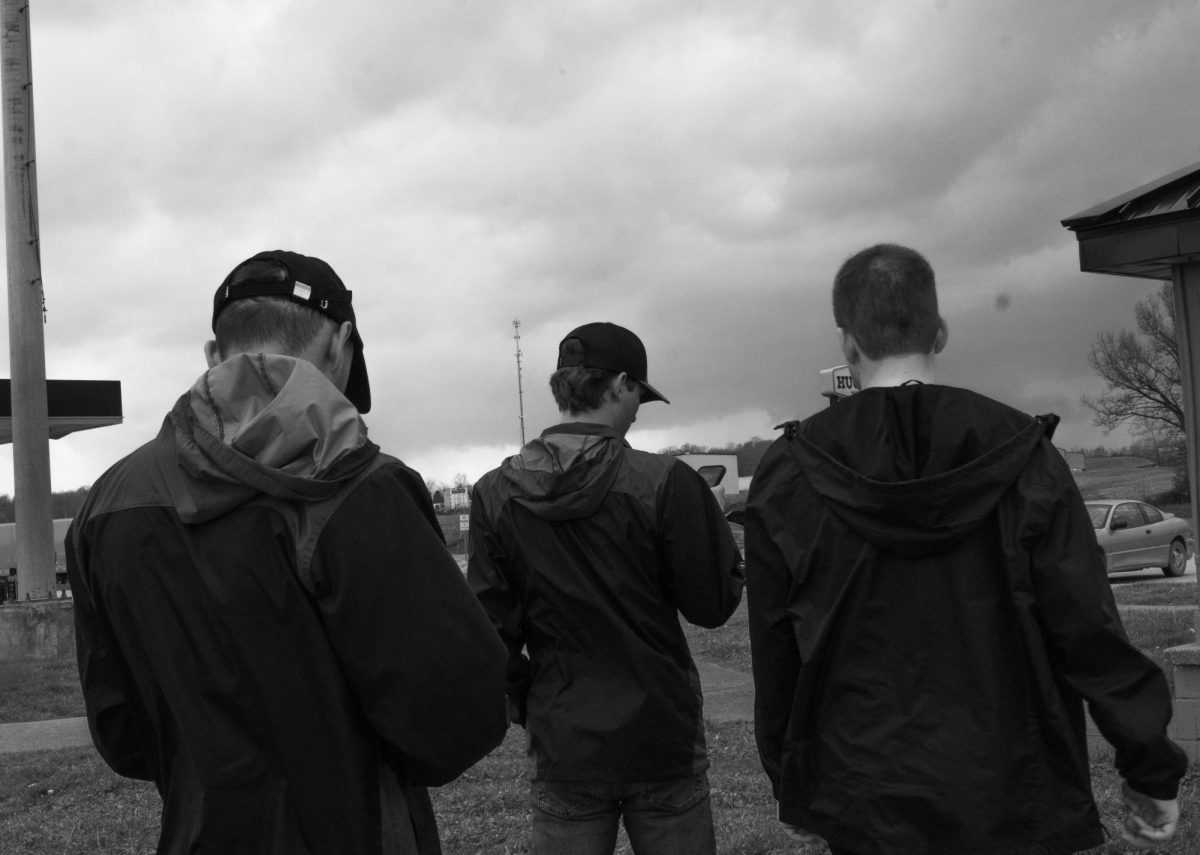
Hoist the sails
The wind continued to batter the car. With one hand holding onto the overhead handlebars and another grasping his phone, Garlitz alerted us that a hook and strong rotation were spotted on radar. Martin let out a breath, punched Garlitz’s arm, and peered out the windshield. Now, he had to find the best position. Our route led past the storm, but we needed to get below it and follow it closely. The next exit isn’t for miles, and he’s running out of time.
Noticing a break in the median, Martin hit the brakes and spun into the U-turn lane. Traffic sped toward us, but there’s no time to wait. He pulled out into the left lane and punched the pedal to the floor.
The engine roared.
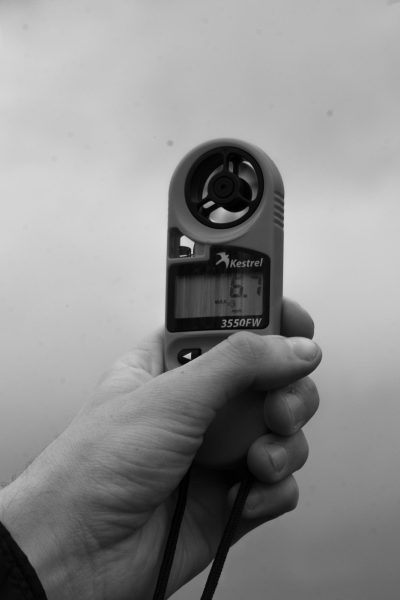
It’s going to burn out.
A truck closed in on our rear.
Come on. Kick in!
The engine turned and caught gear, and the speedometer soared.
We’re back on track.
In less than five minutes, we reached a truck stop. Martin parked sideways, covering multiple spaces, in case a quick getaway was needed. With the engine still running, everyone got out of the car. Martin ran to the sidewalk and looked out over the horizon. Garlitz joined, smiling broadly. Miller followed last, taking in the scene. Miles away, a wall cloud danced through the sky. We watched on as the spinning cloud rotated, knowing it could drop down at any moment.
Miller stepped onto an outdoor picnic table, taking pictures on his phone to send to his brother.
Garlitz paced around the lot, taking in the wall cloud, his first with Martin.
But when a tornado didn’t form, Martin rushed us back to the car. We buckled in and sped off.
“From a meteorology standpoint, this is it,” Martin said. “This is the storm you want to be on. It’s still a baby.”
The storm is isolated from others, meaning it has room to grow. The consistent rotation kept Martin’s attention for miles, even when it started to slow.
A few miles more, it slowed some more.
Another. Slower.
Slower.
Unlike Martin and his crew, my uncle wasn’t checking radars back in 2021. Jamie had no idea the ferocity of the storm that raced faster and faster toward him. Sitting in his recliner in his living room, he said he just felt he had to put on a pair of jeans. Then, after sitting back down in his chair, he said felt he had to put some shoes on. After more time passed, he said he felt he had to leave. He got into his white Ford Explorer and drove away from Dawson Springs. After finally calling my mother and I for updates from the news, he drove back home and, where his house was supposed to be, he found only rubble.
His log cabin was torn apart. Trees were uprooted and leaning over where the front porch would have been. The roof had vanished. The front and side walls were gone. The floor was shifted off the foundation, revealing concrete blocks underneath. The only standing part of the house was the rear wall where his kitchen had been.
His leather sofa had been thrown down beside his Jeep, about 90 feet from where it had been in the living room.
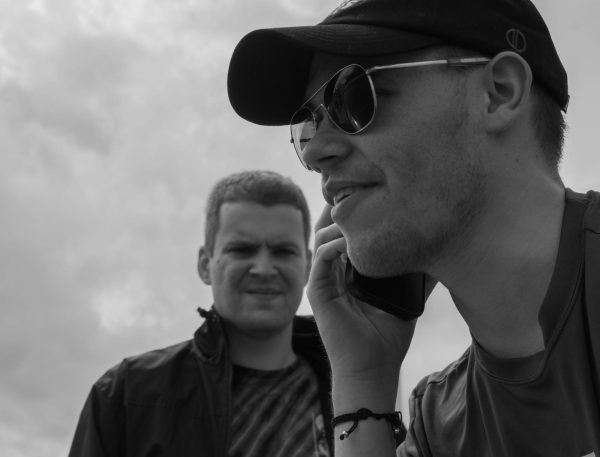
To other shores
We followed the storm back to Elizabethtown, pulling off into yet another gas station. After minutes of silence and reflection, Martin decided to continue toward Bardstown. The trees marched past steadily with the sun peering through the leaves, casting a shadow across Martin’s features. His eyes narrowed as he glanced from the road to the radar, searching for his treasure.
Garlitz, chuckling, alerted Martin that another storm was just confirmed via radar to have touched down just south of Bowling Green.
We could have just stayed put.
“You’ve lost,” Garlitz said to Graham. “Give up.”
Martin’s posture straightened. The speedometer rose again. If that whale was still out there, he wouldn’t stop until he captured it.
By the time we were 30 miles out from Bowling Green, the storm had passed. At the helm, Martin reassures us that the day was not in vain.
“We did everything right,” he said. “It just didn’t cooperate.”
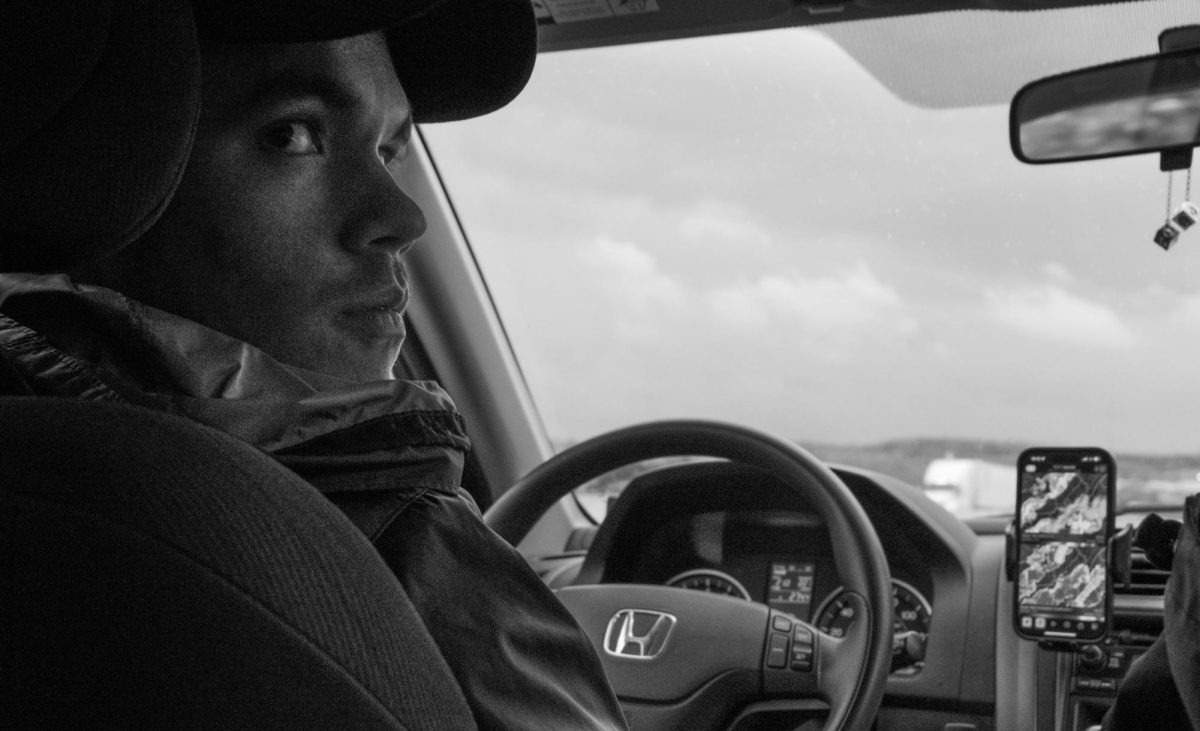
News reporter Cameron Shaw can be reached at [email protected].

